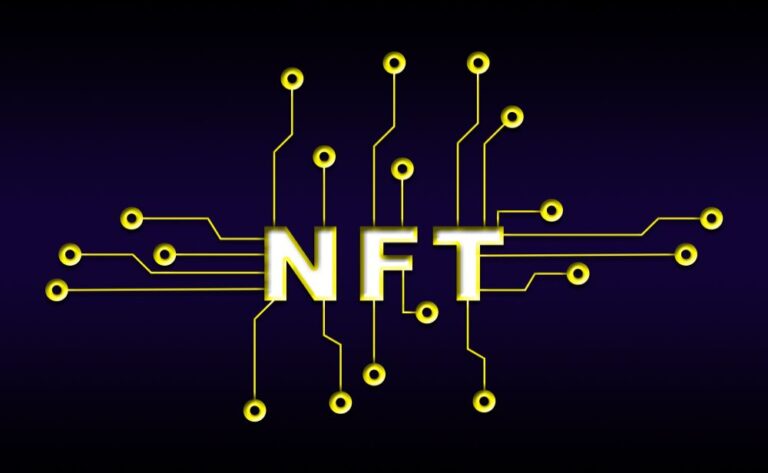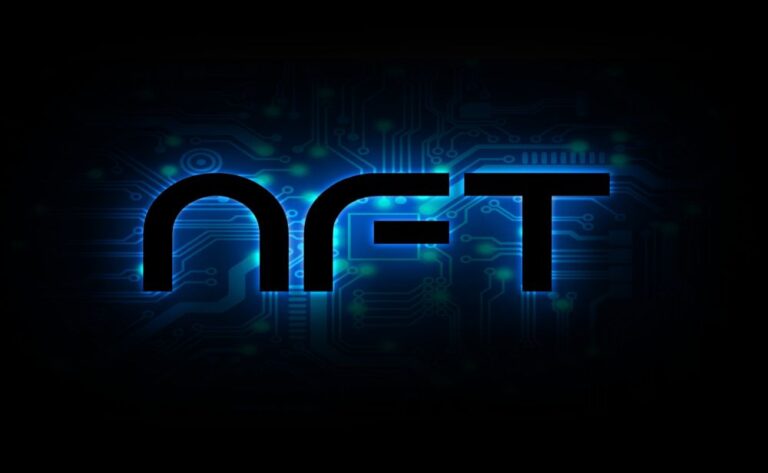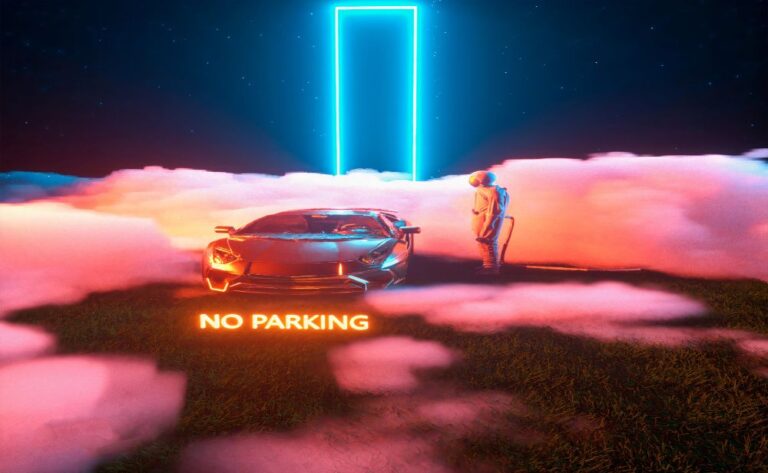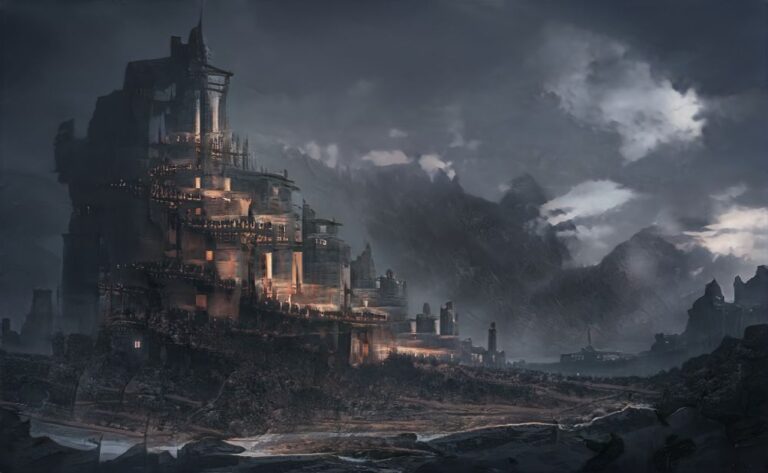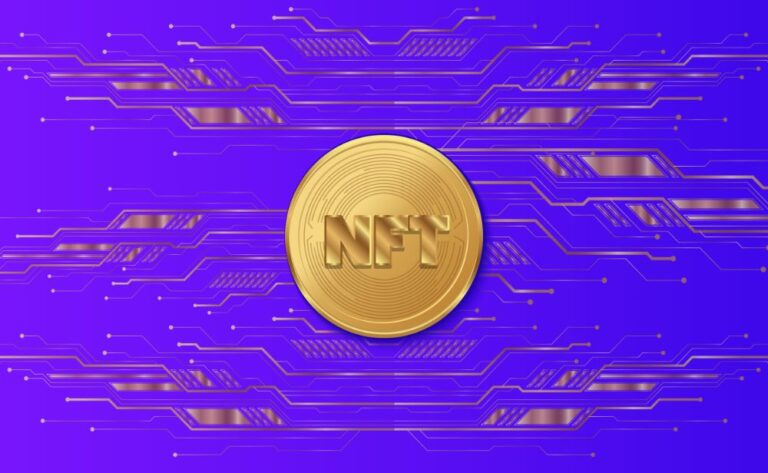
If you are interested in entering the NFT market, you are likely curious about the finest marketplace. Check out our list of the top NFT marketplaces that our team at BestNFTs.com has carefully analyzed.
Top NFT Market Place Evaluations
OpenSea.io is the largest NFT exchange on the web. With over 19 million unique NFTs to pick from, as well as support for other categories and wallets, it is the best NFT marketplace available. The commission rate is just 2.50 percent. If you dislike excessive costs, there are three blockchains from which to select.
AtomicHub
AtomicHub NFT marketplace features relatively low fees compared to other NFT markets. Creating NFTs is simple; all you need is a WAX token, which is available on all major exchanges. You can make the first few NFTs for free, but you must purchase WAX tokens if you want to generate more.
Art Blocks
Art Blocks is a unique type of NFT collection in which users can select a desired style, pay for it, and receive art randomly generated in accordance with the selected style. The inventor will essentially code an algorithm and distribute it on the Ethereum block. During the process of coinage, the image will be developed and created on-site. Some of the artifacts in this collection were sold for exorbitant sums, for example, “Fidenza #313” was sold for almost $1 million. $3.3 Million.
NFTrade
NFTrade supports numerous blockchains, including Ethereum, Binance’s smart chain, Polygon, and Avalanche. They are currently giving zero percent fees for everyone who wants to sell or buy their NFTs. They are still young, but given that they support four distinct blockchains, we may anticipate their growth in the near future.
MakersPlace is an additional Ethereum-based market. MakersPlace is distinct from other marketplaces in that PayPal can be used to purchase non-fungible tokens. This is great for newcomers to the world of NFTs and cryptocurrencies. Additionally, they support the Ledger hardware wallet, which may keep your digital assets offline.
SuperRare
SuperRare is an Ethereum blockchain-based NFT marketplace. To sell your artwork on this marketplace, you must first receive approval from the SuperRare moderator staff. Due to the difficulty of entry, the vast majority of the work posted is of the highest quality. They prioritize scarcity rather than market saturation.
Foundation
Foundation is among the first marketplaces to enable the minting of NFTs in 3D space. Even though it was released after the majority of other marketplaces on this list, its creators have already earned over $100 million. It is built on the Ethereum blockchain, and transaction costs are 15%.
Rarible
Rarible is a 2019-founded Ethereum-based NFT marketplace. It includes over ten distinct categories and a modest commission rate of 2.50 percent. It supports a multitude of wallets. It has a high overall sale volume relative to the number of other NFTs on this market.
WALLETS SUPPORTED
MetaMask, Torus, WalletConnect, Portis, Coinbase, MyEtherWallet, and Fortmatic are examples of cryptocurrencies wallets.
How do we determine the best NFT markets?
1. Total NFT – How many NFTs are available on this marketplace in total? The greater the number of NFTs, the better for users. Nobody likes a marketplace with a limited number of things for sale.
2. Overall sale volume – Although we appreciate marketplaces with a vast selection of products, total sale volume is also important. What is the use of having a multitude of different NFTs if nobody purchases them? The greater the total amount of sales, the better.
3. The amount of categories – A crucial requirement that ensures a diverse selection of options. This is essential for both artists and consumers. The greater the variety of categories, the better.
4. Tokens — This factor is crucial since certain blockchains, like as Ethereum, can occasionally have high transaction costs. A large selection of supported tokens let users to purchase and sell NFTs with lower transaction fees.
5. Wallets supported — We want a marketplace that supports a wide variety of wallets because nobody like having to create a new wallet simply to use the marketplace.
6. Fee – It goes without saying that the lower the fees for creators and traders, the better.
What exactly is an NFT Market?
NFT Marketplace is an online marketplace where anyone may buy, sell, and trade NFT things. Whether these objects are art, virtual worlds, collections, in-game stuff, or something else, you can receive them there if they are Non-Fungible Tokens.
There are a variety of online marketplaces, thus we have decided to present you with a list of the best NFT marketplaces that we have hand-selected. We’ll progressively walk you through how we select the best candidates for our list.
How much NFT artwork exists?
Just on the OpenSea.io marketplace, there are almost 19 million NFT works of art, as shown in the table above. Some of these things are accessible on more than one marketplace, but that does not indicate they are duplicates. Each NFT object is distinct and cannot be counterfeited.
The majority of artists and producers will select their preferred market based on the following factors:
• What is the cost for publishing or selling the artwork?
• Which NFTs can be sold or purchased?
• On which blockchain does the market operate?
• How dynamic is the market?
• How simple is it to post NFT artwork?
• Which wallets can I use to store and exchange NFT?
Based on these questions, we’ve compiled a table to assist you in selecting the finest NFT marketplace overall. If you are unclear of which wallet to use, consult our list of the “Best NFT Wallets.”
What are the fees on the top NFT exchange?
Before deciding where to buy or sell your NFT, you should first examine the chart below to determine how much fees markets charge.
Nevertheless, certain marketplaces may have modest costs and a small user base. When searching for the top NFT marketplaces, it is essential to consider all relevant parameters.
So what exactly are these market fees?
NFT Marketplace costs are virtually always incurred during the minting process and while selling artwork. During the minting process, your digital asset is transformed into an NFT on the blockchain.
To publish your artwork on the blockchain, you must pay transaction costs, sometimes known as “gas” fees. The volatility of transaction fees can occasionally make the minting procedure costly.
Some marketplaces, such as OpenSea, utilize “Lazy minting,” in which your artwork does not become a legitimate NFT until it has been sold. OpenSea mints your item when someone purchases it. This is a fantastic way to save money, since you will not be required to pay for each NFT you place on the market.
You will also be required to pay a small fee to the marketplace for providing you with a platform from which you may sell your work. These costs range from 0% (yes, this is even a possibility) to 15%.
Some marketplaces impose only commission costs, others only buyer fees, and others both.
How do NFT market fees operate?
After selling an NFT, the seller is responsible for paying the commission costs. For instance, if the charge is 2.5% and the painting is sold for $100, the seller will receive 97.5$ and the marketplace will receive 2.5$.
The buyer pays the buyer fees once he has paid for the NFT he wishes to purchase. For instance, if the fee is 2.5% and the initial price is $100, the purchaser must pay $102.5.
Some markets have also made it feasible for creators to profit from the resale of their works. These forms of fees are sometimes known as supplementary fees or royalties.
For instance, OpenSea permits you to set a 10% price for your original work. You only need to provide the address of your digital wallet and the transaction fee.
Each time your artwork is sold, you will receive a royalty payment. It is crucial to note that the royalty fee does not apply to private purchases and gifts. This means that you will not receive a royalty charge if someone buys an NFT from you and then gives it to a friend.
What categories of NFT markets are available on the best NFT marketplaces?
Most people, while discussing NFTs, will only consider image and video art, but what other categories exist? Here are some of the most prevalent non-fungible token categories on marketplaces:
• Image
• Music
• Video
• Collections
• Animation
• Virtual universes
• Domains
• Utility
• Collectible card
• Sports
Possibly even more NFT classifications exist, but the ones listed above are the most prevalent. Verify that the category in which you intend to establish the NFT is available on the marketplace where you wish to sell.
The amount of categories is also a crucial factor for determining the finest NFT marketplaces. The more categories a marketplace has, the greater variety of artists it can accommodate. More artists means more money on the market, which raises your likelihood of selling your art.
Now, let’s examine the nature of each NFT category individually.
Images are among the most frequent goods on all NFT marketplaces. Images can be created digitally, even with the help of artificial intelligence (AI), or by hand and then photographed.
All of the aforementioned marketplaces contain a picture category, however we’ve observed that the Foundation marketplace’s “Worlds” category is the most comprehensive. The Worlds category comprises seventeen distinct sub-categories:
• Dimensions
• Architecture
• Visuals
• Organisms
• Illustration
NFT Images are a wonderful chance for up-and-coming artists who can earn money due to the increased visibility. When compared to the “real world,” it was previously virtually difficult for unknown musicians to earn millions of dollars, but NFT has altered that.
Some artists will also mail a tangible product if you purchase their NFT; be sure to check the item’s description before purchasing. There is sufficient art for everyone, with prices ranging from a few dollars to over a few million dollars.
Music
Music is a lesser-known category of NFT art, yet it is available in multiple marketplaces. As with photos, this sort of NFT has enabled up-and-coming musicians to generate income without a large social media following.
However, this does not mean that these artists do not promote NFT projects they created. It presents a unique possibility for collectors to “keep” the music in their wallet and resell it for a substantial profit if the singer becomes popular.
When you own a song, one of the NFT use cases involving music is the ability to collect a royalty charge. Obviously, this must be included in the contract and programmed into the NFT, depending on the artist’s decision.
Essentially, all you need to do is purchase their NFT to receive a portion of the royalties they normally receive when the song is broadcast on the radio or online streaming services. This type of money-making possibility is still being explored, but NFT Music projects are already utilizing it.
Video
NFT Videos may be the primary reason why NFTs have recently received so much media attention. It all began when Rodriguez-Fraile sold an artwork for $6,600,000. This piece of art was created by the renowned artist Beeple and sold to Rodriguez for $67,000. Rodriguez then sold it for this large sum.
We then learned that “LeBron James dunk” NFT was sold for a staggering $208,000. As if that weren’t enough, we then learned that Grimes had sold her NFT artwork for a total of $6 million, at which point the NFT market exploded.
People heard about it and desired entry. Soon, everyone was acquiring a variety of NFTs, including video and collections.
Videos typically include sound, and you may find this category on the majority of large NFT marketplaces. They range in length from 10 second video, such as the one created by Beeple, to those exceeding two minutes.
Collections of NFT
Once NFT films made it to the media, something else captured the attention of those in the NFT space: collections. The most well-known collections are image collections such as CryptoPunks, although collections can take on a variety of forms and formats.
A collection will often contain a particular amount of collectibles, such as 10,000. Each of these 10,000 NFTSs is unique and possesses its own distinct characteristics. Taking CryptoPunks as an example, these are their characteristics:
• Type (For example, male)
• Accesoire (For example, earring)
Collections can have various characteristics, some of which are quite rare, hence increasing the price of collection items. Some collections, such as CryptoPunks, are randomly created, while others are individually drawn and do not need to resemble one another. Artists determine the collection’s organizational structure.
CryptoPunks is the most valuable collection in terms of market capitalization, although there are other additional NFT Projects worth mentioning:
• Art blocks
• Uninterested Ape Yacht Club
• Mutant Ape Yacht Club
• Loot
• Pudgy penguins
Visa, the most popular credit card business in the world, purchased a CryptoPunk for $150,000, which demonstrates how much media attention collecting received. Visa stated that this represents a “new chapter” in digital commerce, and we must concur.
Other major “players” such as the NBA have opened their own NFT stores selling merchandise relevant to their brand. For instance, the NBA has made it easy to compile video NFTs of various players and their most significant moments.
Even if there is a substantial amount of money in the NFT industry, we feel this is only the beginning. NFT has numerous application cases, and many more are forthcoming.
Animation
Animations resemble videos in many ways, although they are drawn rather than recorded. Additionally, this is one of the most popular categories available on marketplaces. For instance, the second most expensive collection, “Art Blocks,” consists primarily of animations, which is sufficient evidence of animation’s appeal in the NFT universe.
They can either be sold individually or as part of a collection. “Nyan Cat,” one of the earliest YouTube sensations, is also accessible as an NFT and is an animation. Since then, the artist has created other modified Nyan Cats that all belong to the same collection. You may view the comparison of collections below.
Virtual universes
This category may not be the most popular, but it is certainly one of the most intriguing. There are numerous NFT virtual world projects currently available, therefore let’s briefly describe them.
Virtual worlds are essentially games where individuals from all around the world can engage. These virtual worlds offer a variety of features and opportunities; some even let participation with a virtual headset (VR). How does NFT fit into these universes?
For instance, Decentraland has enabled the purchase of virtual property within its virtual world game. You may acquire this property as an NFT and keep it forever. Once you purchase a plot of land in the game, you become its owner and can construct on it.
In addition, there are now wearable NFT products available for purchase on the market. Since NFTs are one-of-a-kind, each player can obtain something that no other player has, which is really cool.
After purchasing a property in a virtual world, it is possible to swap it with other users. ATARI has just purchased land within Decentraland and constructed a casino where anyone can try their luck in an effort to make the setting even more intriguing.
There are plenty additional virtual worlds accessible, so be sure to check out our rating of the Top NFT Virtual Worlds.
Domains
Prior to the blockchain, there were two ways to purchase a domain name: cash or wire transfer.
• ICANN
• DNS
Both of these approaches entail a centralized authority with the ability to censor you or your website. Fortunately in 2008, A person using the alias “Satoshi Nakamoto” invented the concept of blockchain. Eventually, we obtained our initial domains on the blockchain network.
What differentiates ICANN/DNS domains from Blockchain domains? Blockchain domains are decentralized in every way.
You can also use a blockchain domain to reduce your public wallet address to “yourwallet.crypto” in addition to using it for your website.
Certain organizations, such as Unstoppable Domains, offer a registration service for blockchain domains with extensions such as:
• .x
• .crypto
• .coin
• .wallet
• .bitcoin
• .888
• .nft
• .dao
• .zil
• .blockchain
The best aspect of blockchain domains is that there are no renewal costs after purchase. It is not surprising that the majority of such names cost more than.com or other famous domains, given that you own them permanently once you purchase them.
NFT Domains are blockchain domains, however in addition to the aforementioned use cases, they can also be exchanged as collectibles. You can find them on some of the aforementioned marketplaces. After purchasing this NFT, you will also get access to the domain.
Utility
NFT could not remain as art indefinitely; another use was required to make the decentralized marketplaces worth the hype; so, utilities were introduced.
What exactly is an NFT utility? Essentially, utilities supply additional items to the owners of a certain NFT. As with everything else, utilities come in many sizes and shapes. Examples of utilities include:
• Communities
• Realistic objects
• Tickets
• Airdrops
• Access to private sales
Take the ticket as an example. The NBA Top Shot collection was one of the first sales to offer a real-world utility in the form of a ticket, as previously indicated. It was a ticket for the fifth game of the NBA championships.
Each of the eight winners who had previously purchased an item from the NBA Top Shot collection received tickets to the finals. Perhaps this will occur more frequently in the future when artists offer concert tickets to individuals who purchase their NFT.
Airdrops are also a frequent instance of a utility use case. In most situations, a person must purchase a certain NFT in order to participate in the airdrop of a token, which is hosted only for collectors.
Communities are also on the increase. Once a person acquires an NFT from an artist’s collection, he will typically gain access to a secret Discord server-hosted community.
There are numerous applications for NFT, and “Nike” has even trademarked a mechanism to authenticate the validity of their footwear utilizing blockchain technology and NFT.
Collecting cards
Since their inception in the 1860s, trading cards have remained a popular pastime for millions of people throughout the world. It began with baseball cards, then moved on to football, and eventually all types of trading cards were available.
Trading cards are special since they are all unique and created in limited editions. This is precisely why NFT is useful. An NFT cannot be forged, nor does it degrade over time.
Perhaps the new baseball trading cards will be available on NFT marketplaces. One thing is certain: NFT and the blockchain can improve and lessen the dangers connected with the trading of trading cards between individuals.
In addition to being used for collection reasons, trading cards also take the form of playing cards. For instance, the Mythereum initiative has produced two unique editions of trading card packs. Players can gather cards, construct a deck from them, and challenge other players.
Each Mythereum card possesses characteristics such as:
• Class
• Ability
• Version moniker
• Attack
• Damage
• Strength
After acquiring enough cards from the NFT marketplace, the user can assemble them into a deck and compete against other players on their website.
These decks are limited edition, so after they are sold out, the only way to get the cards will be through trading with other players.
This is only one of many such initiatives. Trading cards constitute a significant portion of the greatest NFT marketplaces and are one of the most popular categories. Many trading card game projects are “in process,” and users can purchase cards as they await the game’s debut.
Sports
This NFT Marketplace category contains a vast assortment of products. You can find items relating to sports, various racing games such as Zed Run or Revv Racing, sports kits, clips, and even autographs.
If you want to feel unique in a game like Revv Racing, for instance, you may purchase an NFT car on a marketplace and utilize it in-game. As with the Zed Run racing game, these limited-edition products are exclusive to the NFT marketplace.
NFTs can enable you acquire sports kits directly from your favorite sportsmen, eliminating the need for a middleman. The same holds true for signatures; after an NFT has been purchased, an athlete can send you an autograph.
Trading cards are another sub-category of sports. Some online markets divide these two groups, while others create sub-categories.
Essentially, trading cards for baseball, basketball, or any other sport would fall under this category.
What blockchain do the greatest NFT exchanges operate on?
The majority of NFT marketplaces are built on the Ethereum blockchain, however this year has shown that not even ETH has a solution to the scalability problem.
The rapid expansion of the NFT market has led to extremely high transaction fees, making the purchase of inexpensive NFTs with ETH practically unfeasible, as the transaction fees are frequently greater than the value of the art itself.
Many of the best NFT marketplaces have decided to construct additional blockchains to address this issue. The most prevalent blockchains on NFT exchanges are:
• Ethereum (ETH)
• Tezos (XTZ)
• Polygon (Polygon)
• Klaytn (KLAY)
• Wax (WAXP)
• Solana (SOL)
• Flow (FLOW)
• Cardano (ADA)
If a marketplace has more than one blockchain, merchants will choose which blockchain to post their NFT on independently.
Since customers are more inclined to purchase when there are no transaction costs, we anticipate that more artists, both producers and buyers, will migrate to other blockchains.
What differentiates the various blockchains?
For NFT suppliers and purchasers, there is essentially no distinction. In the majority of NFT marketplaces, you will be able to use your preferred cryptocurrency to make a buy or receive payment from a sale.
A smaller number of marketplaces, however, require customers to acquire and receive payment in the native token for that network.
On a Tezos blockchain, for instance, you would require an XTZ token to acquire an NFT or to receive payment if you are a vendor. Since there are so many exchanges available nowadays, you can trade this token for one of your choosing.
As blockchain technology advances and NFT grows in popularity, we may anticipate considerably lower transaction fees and a greater number of tokens supported on the leading NFT marketplaces.
Until then, we give preference to markets that offer more tokens because nobody loves the hefty ETH transaction fees.
Which wallets are supported by the top NFT exchanges?
To gather various NFTs, you will require a digital wallet that supports them. Not all wallets that can store cryptocurrencies are compatible with NFT, thus you must ensure that your wallet supports these tokens.
If you are in a hurry and need to know which are the Top 10 NFT Wallets, check out our rating page.
Obviously, the NFT marketplace should accept as many wallets as possible. Nobody like having items scattered about, and wallets are no exception. Over time, it can become difficult to keep track of all of your wallets.
However, there are wallets that support both cryptocurrencies and NFTs, which is perfect if you are interested in both of these markets.
This criterion is also crucial while determining the best NFT marketplaces. Some marketplaces support up to 14 distinct wallets, while others may only offer two.
With the exception of AtomicHub, which runs on the WAX token, and Hic Et Nunc, the majority of the marketplaces we’ve studied support the MetaMask wallet. What alternative wallets can be utilized on the top NFT exchanges?
• Trust
• Portis
• Fortmatic
• Authereum
• Kaikas
• Torus
• WalletConnect
• WalletLink
• Temple
• Kukai
• Umami
• AirGap
• Coinbase
There are numerous other digital wallets that can be used to hold NFTs. If you wish to store everything in a single wallet, check the table at the beginning of this post to determine whether marketplaces support which wallets.
Additionally, there are hardware wallets that support NFTs. These wallets provide an additional degree of protection against attackers. Hardware wallets that support NFTs include:
• Ledger
• Prokey
• CoolWallet Deluxe
• SafePal
• D’CENT
We are confident that this list will grow in the future, but if you possess any of them, you may store your NFT on them.
Each blockchain has its own set of standards; for more information on NFT Standards, consult the NFT University guidelines.
When transferring NFT to your wallet, you must first determine which standard it follows. For instance, the Ethereum specifications ERC721, ERC998, and ERC1155 support NFTs.
How do the top NFT marketplaces generate revenue?
If you were curious about how the finest NFT marketplaces generate revenue, we shall explain. There are numerous methods by which marketplaces might generate revenue:
• Minting charge
• Seller’s fee
• Buyer’s premium
• Ads
• Promotions
• Market-Owned Mutual Funds
Let’s begin with the listing charge, commonly referred to as the minting price. Some NFT marketplaces will charge users a fee to upload their artwork. As soon as the marketplace adds your digital work to the blockchain, “minting” will occur.
Once you’ve paid the minting procedure cost, your digital work will be posted to the blockchain, and you’ll have an NFT that you may sell, trade, auction, or otherwise use as you choose.
Certain marketplaces, including the largest, OpenSea, have implemented the aforementioned “Lazy-minting” technique. This process saves creators money because the NFT is not created until it has been successfully sold.
The process of coinage includes two distinct fees: gas fees and marketplace service fees.
Gas prices
Gas fees vary based on the blockchain on which you are attempting to post your NFT. As previously mentioned, a number of distinct blockchains are supported by marketplaces.
Ethereum is one of these blockchains, but it has issues with scalability. Once NFT became popular, what was previously a theory was proven to be true. Since the minting process requires one transaction, the Ethereum blockchain became congested and transaction fees skyrocketed at a certain point.
Ethereum was the first blockchain to support NFTs, but since the discovery of the scalability issue, other blockchains have implemented their own NFT standards.
Other blockchains have significantly less expensive gas fees than Ethereum.
This portion of the cost of the coin minting process relates to the blockchain, not the market. Consequently, NFT Marketplaces cannot profit from gas fees; if anything, it ultimately harms them.

